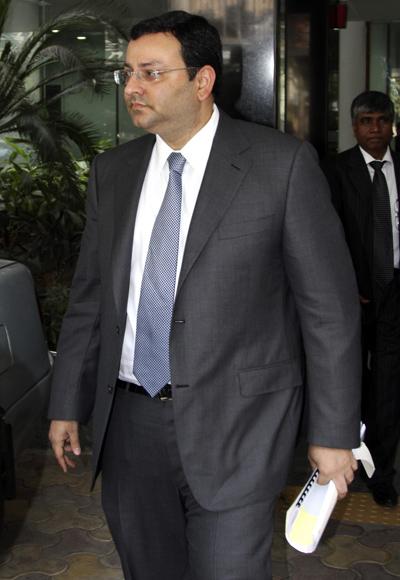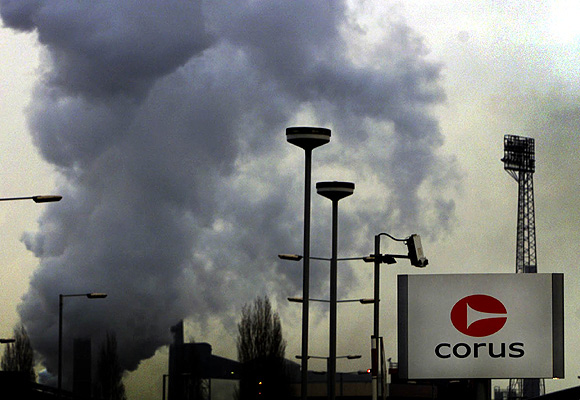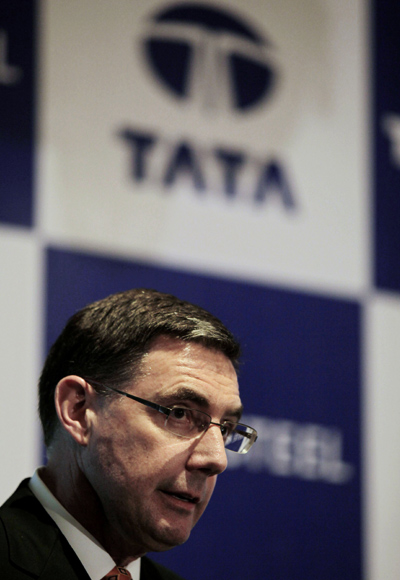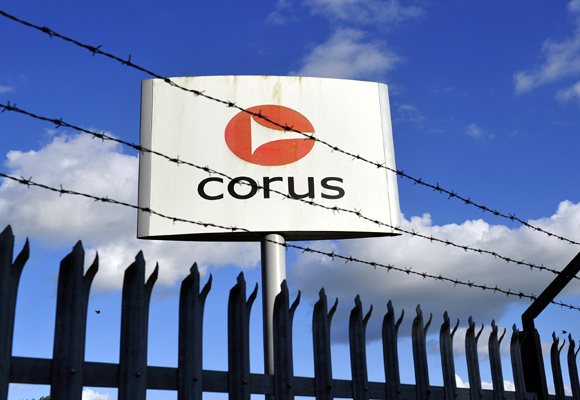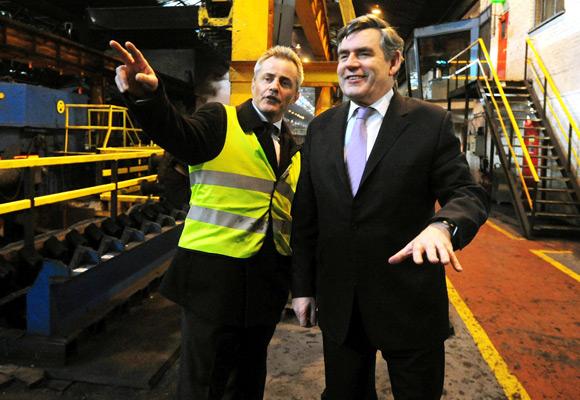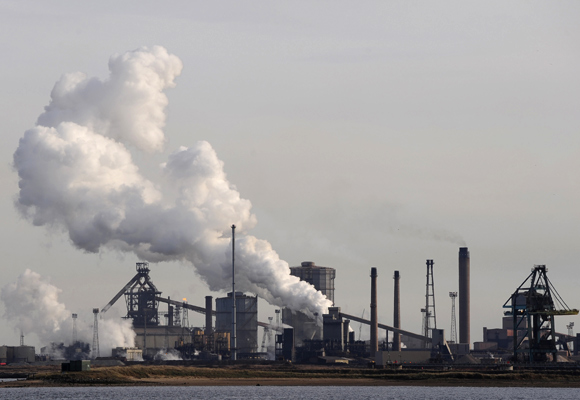 | « Back to article | Print this article |
What the Tata Steel write-off reveals
In 2007, Tata Steel created history of sorts by acquiring Anglo-Dutch steel maker Corus (now Tata Steel Europe) in a $13-billion deal.
It was the biggest foreign acquisition by an Indian company ever. Its merits were there for all to see.
In one stroke, Tata Steel was catapulted from the 56th spot in the world of steel makers to the fifth, and it became a force to reckon with in the global market.
But the $1.6-billion write-down, announced last week, primarily on its European operations, has raised questions if the company actually went overboard in its pursuit to be one of the top steel makers in the world.
Click NEXT to read more...
What the Tata Steel write-off reveals
Tata Steel has attributed the non-cash write-down of goodwill and assets in the consolidated financial statements in 2012-13 to the weak market environment in Europe, as a result of which steel demand has fallen almost 30 per cent since 2007.
Last year alone saw a drop of nearly 8 per cent, aggravating the company's problems.
The decision has its trade-offs and benefits. According to a Moody's Credit Outlook report, although the write-down will not immediately affect Tata Steel's key credit ratios, because it is non-cash and extraordinary, it is expected to result in a material net loss at the consolidated level once the company releases the full-year results for 2012-13.
Premium payment
But how did Tata Steel come to such a pass? A goodwill write-off essentially suggests that the company paid more than the book value of the asset.
Click NEXT to read more...
What the Tata Steel write-off reveals
At the time of acquisition, Corus shares were trading at around 400 pence on the stock exchange, but the Tatas paid 608 pence a share, a premium of 34 per cent to the original offer price, to ward off a challenge from Brazilian miner and steel maker, CSN.
Did the Tatas overpay?
What is certain is that Tata Steel Europe has been under-performing for the longest time now.
Tata Steel UK Holdings, the holding company for Tata Steel's overseas investments, generated negative EBITDA of $26 per tonne in the third quarter of the fiscal and is barely expected to break even in 2013, says the Moody's report.
In contrast, Tata Steel India's EBITDA per tonne was $243 in the same period, the report adds.
Click NEXT to read more...
What the Tata Steel write-off reveals
Except for about a year from September 30, 2010, when it posted operating profit of Rs 886 crore (Rs 8.86 billion) against loss of Rs 1,802 crore (Rs 18.02 billion) in the same quarter of the previous financial year, it's been a rocky road for Tata Steel Europe. And even that's been hard to come by.
In the second half of 2008-09, as the market deteriorated, Tata Steel Europe took two major cost-saving initiatives: Weathering the Storm and Fit for Future.
The latter entailed some hard decisions like headcount reduction, asset management and restructuring, including closure of some unprofitable businesses.
In March 2011, its Teeside Cast Products was sold to Sahaviriya Steel of Thailand for $467 million, and, if Tata Steel takes CLSA advice seriously, then it should sell Tata Steel Europe altogether.
Click NEXT to read more...
What the Tata Steel write-off reveals
A CLSA brokerage report, earlier this year, said that Tata Steel was looking to sell a part or all of the assets of Tata Steel Europe.
That the steel market in Europe is still in troubled waters is manifest in the numbers provided by Moody's.
Crude steel production in the European Union declined 4.7 per cent in 2012, while apparent steel consumption fell 5.6 per cent from the prior year.
Car sales were down 9.8 per cent year-on-year in the first quarter, while steel production fell 5.4 per cent over the same period. Lack of captive raw material doesn't help Tata Steel Europe either.
Tata Steel's European operations that account for about 70 per cent of the group's steel production delivered 12 million tonnes of steel in fiscal 2013, versus Tata Steel India's 7.4 million tonnes.
Click NEXT to read more...
What the Tata Steel write-off reveals
Plenty of problems
Indeed, there are too many extraneous factor working against Tata Steel Europe.
Malay Mukherjee, who has handled several acquisitions as a board member of ArcelorMittal till 2008, says when the acquisition happened, everything was booming and the company only worked out the best-case scenarios, which seem to be failing now.
Tata Steel did not comment on questions put forward by Business Standard for this article as the company is in the silent period.
"The technical capabilities of Corus were exaggerated. Also, the same pattern of management continued for the first three years; changes were driven by individuals, while the management only reacted," Mukherjee says. Since acquisition, Tata Steel Europe has had three CEOs.
Click NEXT to read more...
What the Tata Steel write-off reveals
Above all, it's the way Corus operated, historically. "While the going was good, Corus dominated the UK market as it was the only home-based company. In a way, Corus was in a cocooned environment. But once the market collapsed, the Europeans entered Corus's domain," Mukherjee explains.
Mukherjee would know as ArcelorMittal was understood to have once considered Corus, but antitrust issues prevented it from going ahead with the acquisition.
Apart from the slowdown, cross-cultural issues played out as well, and Tatas had little to do with it.
"When we acquired the company, the fight between the British and Dutch sides was at its peak. We inherited a legacy," says a former Tata Steel official who worked in the integration process.
Click NEXT to read more...
What the Tata Steel write-off reveals
The Corus group was formed out of a merger between British Steel and Koninklijke Hoogovens in 1999.
The cultural mismatch reflected in the company's financials. Reports indicate that Corus group's market value in 1999 stood at $6 billion (at the time of the merger) and fell to $230 million in 2003.
"When the merger happened, the Dutch facilities were outdated; as a result more money was invested in these plants. The Dutch facilities became more with the times, while the British side became outdated," the former Tata Steel official says.
Mukherjee echoes this sentiment. "Part of the problem is wrong interpretation of strengths and weaknesses of the different facilities on the British and Dutch sides," he points out.
Click NEXT to read more...
What the Tata Steel write-off reveals
Tata Steel Europe's UK facilities are at Port Talbot, Scunthorpe, Rotherham and in the Netherlands at Ijmuiden.
However, Corus was not alone in being stuck in a time warp. Industry veterans point out that it's typical of European plants to not keep pace with the changing times.
"Many European plants did not invest enough to keep pace with the developing technology scenario. Elsewhere, energy consumption steadily came down, reducing the cost of production. Energy cost is 30 to 40 per cent of the cost of steel production. New technologies, advanced mechanisation, and automation reduced the number of employees in steel plants. Some steel plants in developing countries surged ahead, setting new benchmarks. Developments had reached a fever pitch," they say.
